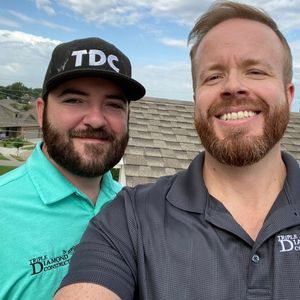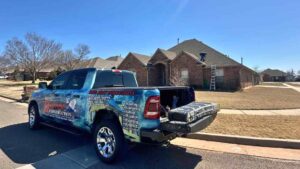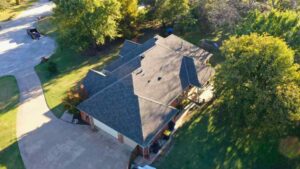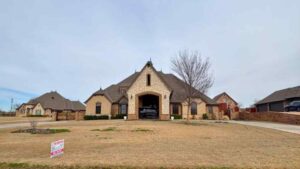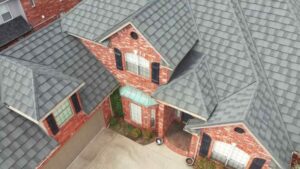Regular maintenance and inspections are critical for your home – our roof inspection checklist makes knowing what to check a breeze!
As a new or first-time homeowner, maintaining your home can seem like a daunting task! It can be hard to know where to start and how often to check certain areas of your home.
One of the most critical yet often overlooked areas is your home’s roof. Not only does it protect you and your family from the elements, it also ensures energy efficiency, and adds to your property’s overall value.
At Triple Diamond Construction, we understand that roof inspections can be intimidating, especially if you’re unfamiliar with what to look for. That’s why we’ve created this comprehensive roof inspection checklist to help you identify potential issues before they turn into costly repairs. Keep reading to learn how to identify common roof problems and how to stop roof leaks before they start!
Why Regular Roof Inspections Matter
Before diving into the checklist, it’s important to understand why regular roof inspections are essential. Over time, your roof is subjected to various weather conditions, including rain, hail, wind, and sun. These elements can cause wear and tear, leading to potential issues such as leaks, mold, and structural damage. By conducting regular inspections, you can catch these problems early and prevent them from escalating into more significant and expensive repairs.
When to Inspect Your Roof
While it’s a good idea to inspect your roof twice a year, ideally in the spring and fall, you should also request a professional roof inspection after any major weather event, such as a tornado or hail storm. This ensures that any damage caused by weather is promptly addressed.
Roofing Inspection Checklist
1. Safety First
Before you start using the roof inspection checklist, ensure you have the necessary safety equipment. Use a sturdy ladder and wear non-slip shoes. If you’re uncomfortable with heights or unsure about the process, consider hiring a professional to perform the inspection.
2. Start with the Ground
Step #2 of our roof inspection checklist starts from the ground. Walk around your house and look up at the roof. Check for any visible signs of damage, such as missing or broken shingles, sagging areas, or debris buildup. Binoculars can be helpful for a closer look.
3. Check the Shingles
Shingles are your roof’s first line of defense against the elements. Look for the following issues:
- Missing Shingles: Missing shingles can expose your roof to water damage.
- Cracked or Curling Shingles: Cracked or curling shingles indicate wear and tear and may need to be replaced.
- Granule Loss: Shingles often have a granular coating that protects them from UV rays. If you notice granules in your gutters or downspouts, it could be a sign that your shingles are wearing out.
4. Inspect the Flashing
Flashing is the metal or plastic material placed around roof features like chimneys, vents, and skylights to help shed water and prevent it from entering your roof system. Use the roof inspection checklist to look for early warning signs like:
- Cracks or Rust: Cracked or rusted flashing can lead to leaks.
- Loose Flashing: Ensure the flashing is securely attached and hasn’t become loose over time.
5. Examine the Gutters
Gutters play a crucial role in directing water away from your roof and foundation. During your inspection, look for:
- Clogs: Remove any debris, such as leaves and twigs, that may clog your gutters.
- Sagging Gutters: Ensure the gutters are securely fastened and not sagging.
- Leaks: Check for leaks or holes in the gutters that could cause water damage to your home.
6. Look for Water Stains and Mold
Inside your home, inspect the ceilings and attic for water stains or mold growth, which can indicate a roof leak. Pay special attention to areas around chimneys, vents, and skylights.
7. Check for Sagging
A sagging roof can indicate structural issues that need immediate attention. If you notice any sagging, it’s best to consult a professional to assess the situation and recommend necessary repairs.
8. Inspect Roof Ventilation
Proper roof ventilation is essential for preventing heat and moisture buildup, which can damage your roof and reduce its lifespan. Check your roof vents for:
- Blockages: Ensure that vents are not blocked by debris or nests.
- Damage: Look for any signs of damage to the vents that could impede airflow.
9. Look at the Roof’s Age
Consider the age of your roof. Most roofing materials have a lifespan of 20-30 years but the yearly storms here in Oklahoma City can reduce that significantly. If your roof is nearing the end of its lifespan, it may be time to start thinking about a replacement, even if there are no visible issues.
10. Examine the Chimney
If your home has a chimney, inspect it for:
- Cracks: Check for cracks in the chimney cap or bricks.
- Mortar Damage: Look for any signs of deteriorating mortar that could allow water to seep in.
What to Do If You Find Issues
If you identify any issues during your inspection, it’s essential to address them promptly. Minor problems, such clearing gutters or removing debris from the roof valleys can often be handled with DIY solutions. However, more significant issues, such as missing shingles, flashing problems, or structural concerns, should be evaluated and repaired by a professional roofing contractor.
When to Call a Professional
While regular inspections can help you catch many potential problems, there are times when it’s best to call in a professional. Consider hiring a roofing expert if:
- You’re unsure about what you’re looking for: Professionals have the experience to identify issues that may not be apparent to the untrained eye.
- You find significant damage: Major repairs should be handled by a professional to ensure the work is done correctly and safely.
- You’re uncomfortable with heights or safety risks: Your safety is paramount. If you’re not comfortable performing the inspection, it’s best to hire someone who is.
Key Takeaways About Using A Roof Inspection Checklist
Regular roof inspections are a crucial part of home maintenance, especially for new or first-time homeowners. By following our roof inspection checklist, you can identify potential problems early and take steps to address them before they turn into costly repairs. Remember, your roof is a vital part of your home’s structure, and keeping it in good condition will protect your investment for years to come.
At Triple Diamond Construction, we’re here to help with all your roofing needs. Whether you need a professional inspection, repairs, or a complete roof replacement, our team of experts is ready to assist you. Contact us today to schedule a consultation and ensure your home stays safe and secure!

